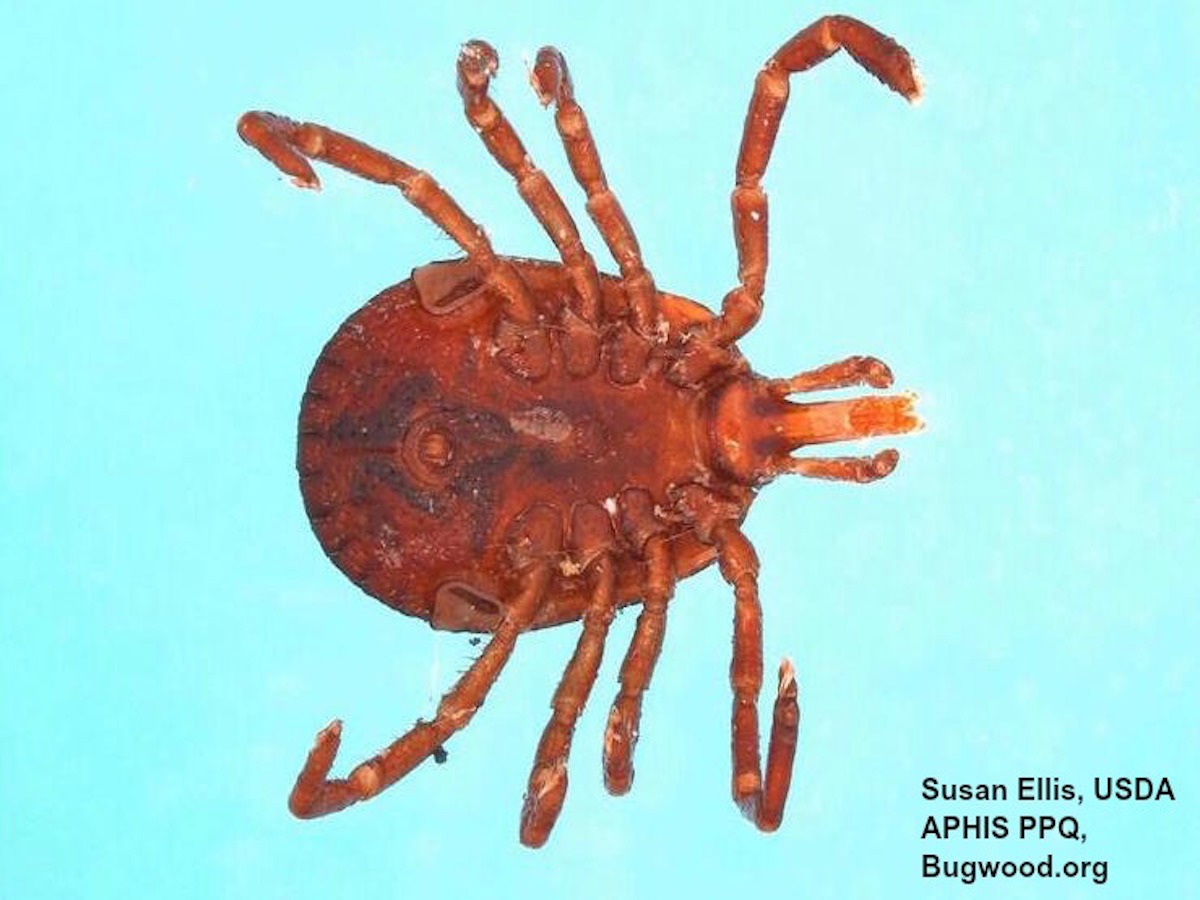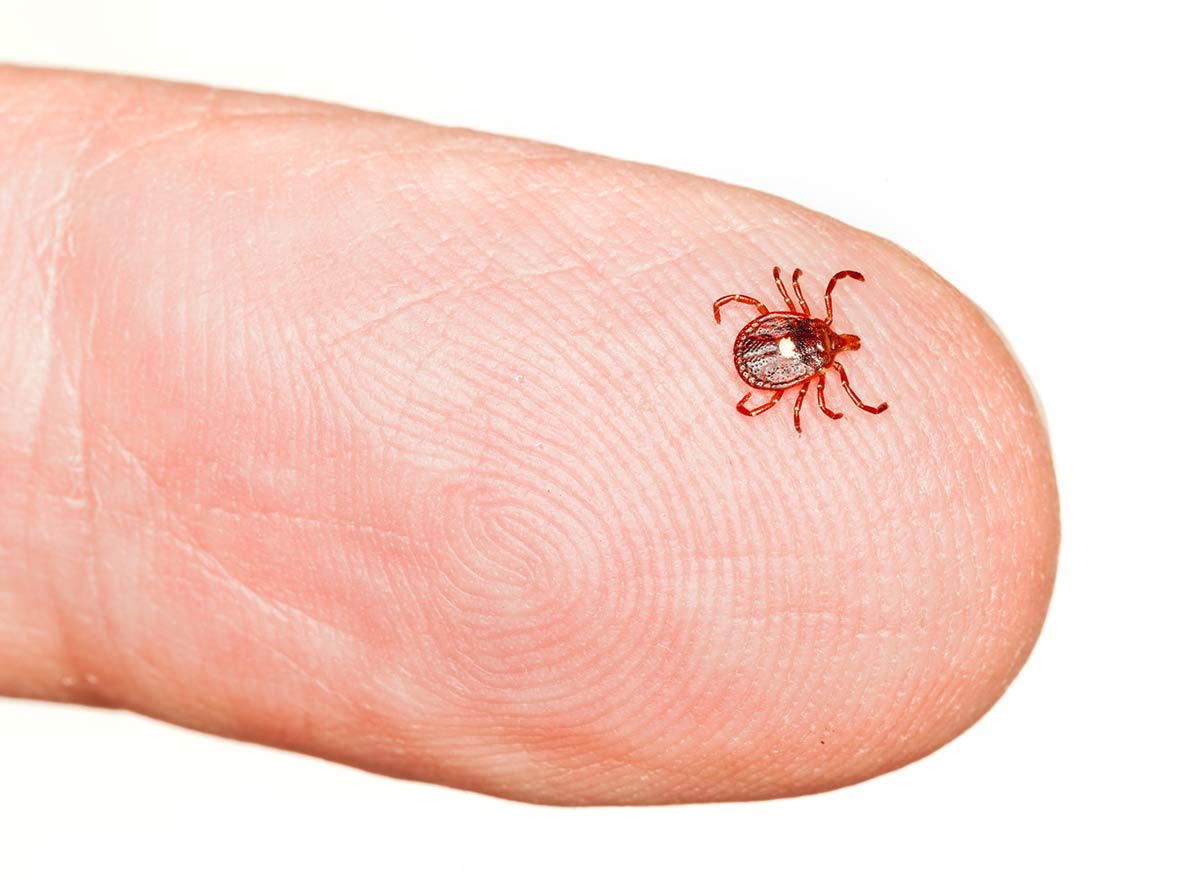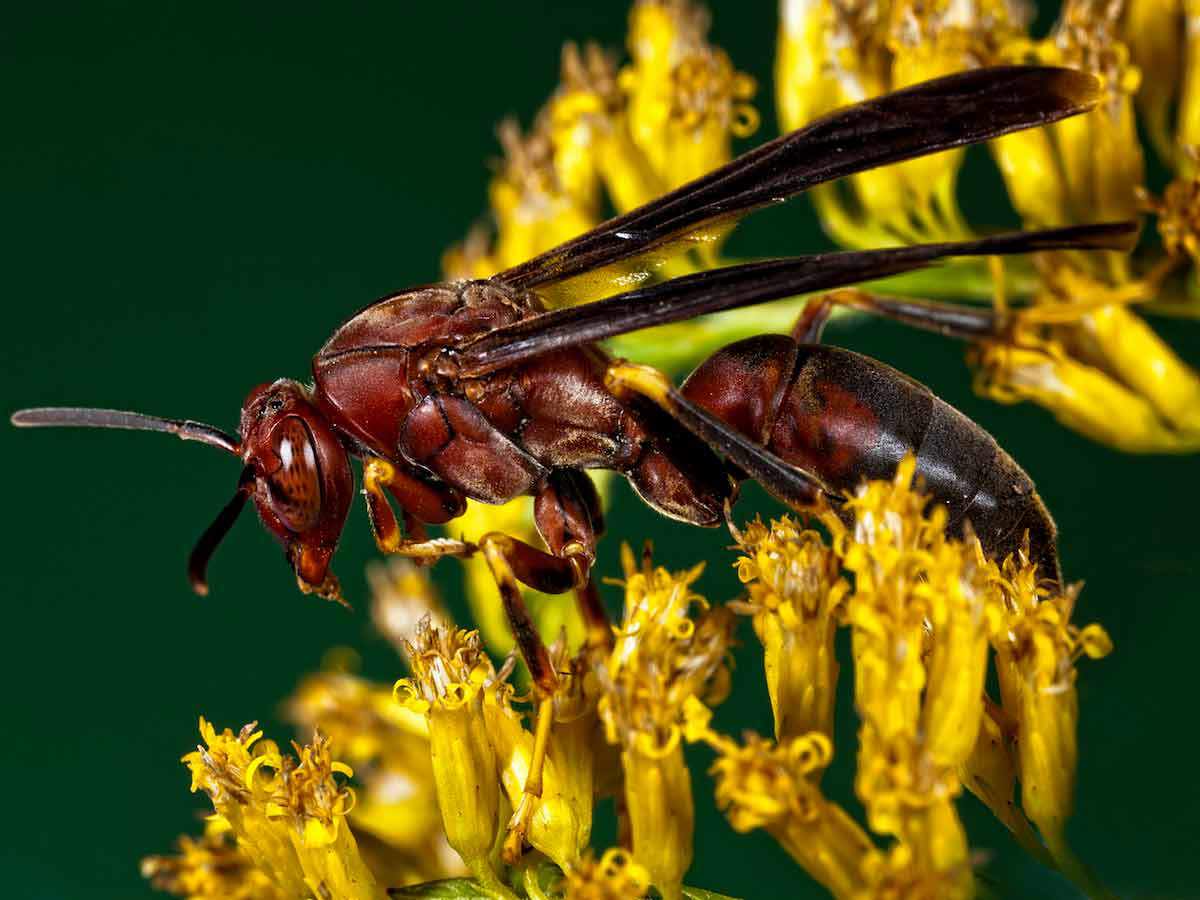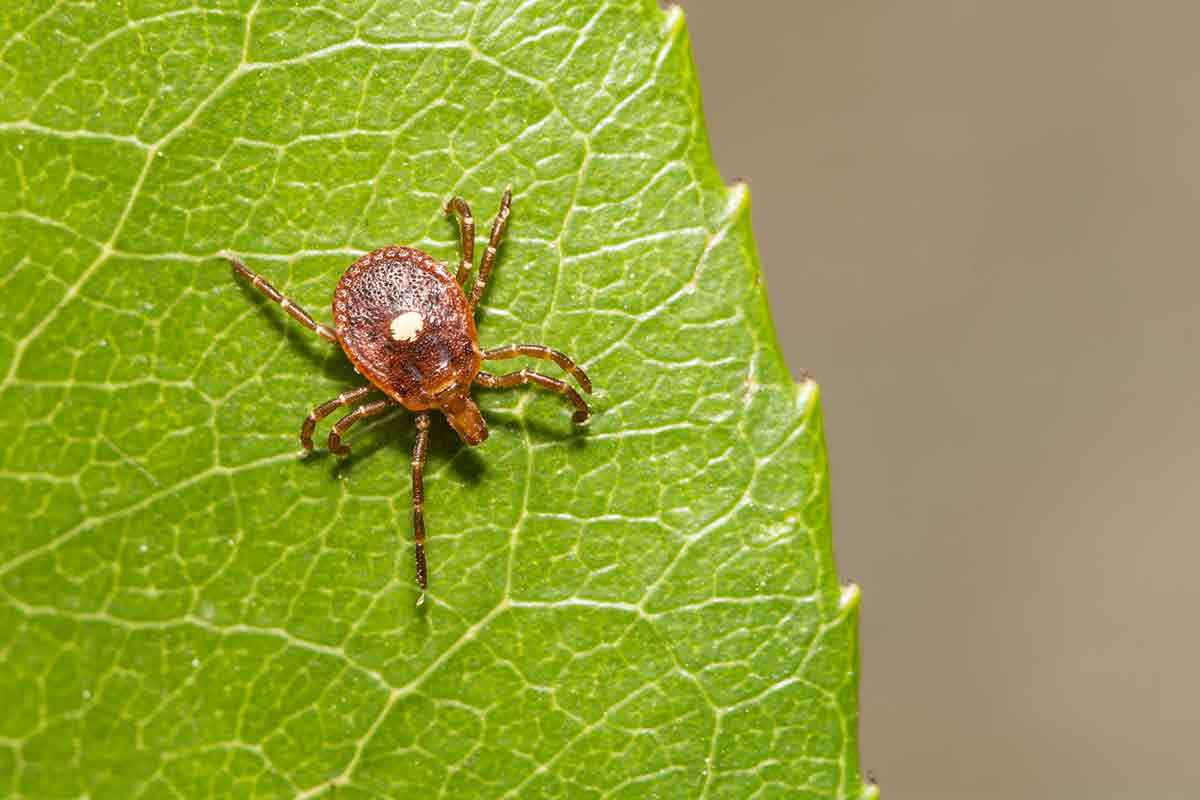Lone Star Ticks Amblyomma americanum (Linnaeus)

Identification
Color: Reddish brown, becoming slate gray when engorged
Size: Females are 1/6-1/4” (4-6 mm) un-engorged and 1/2” (16 mm) engorged; Males are smaller
Legs: Larvae have 6 legs, nymphs and adults have 8 legs
Antennae: No
Shape: Oval, flattened
Region: West central Texas northward to northern Missouri and eastward from Maine to the southern tip of Florida
What are Lone Star Ticks?
The lone star tick gets its name from the single silvery-white spot located on the female's back. These ticks attack humans more frequently than any other tick species in the eastern and southeastern states. Lone star tick bites will occasionally result in a circular rash, and they can transmit diseases. It is essential that lone star tick removal start immediately.

What Do Lone Star Ticks Look Like?
Unengorged adult female lone star ticks are about 1/8 inches long, while males are slightly smaller. When engorged, adult female lone star ticks can be up to 7/16 inches long. Lone star ticks have reddish brown oval bodies that become slate grey when engorged. Females have a single whitish to silvery spot on their backs, whereas make lone star ticks have several inverted horseshoe-shaped whitish spots along their backs.
Lone star tick bites will occasionally result in a circular rash, and they can transmit diseases. If a lone star tick is found on the body, use fine-tipped tweezers to grasp it as close to the skin's surface as possible. Then, pull upward with steady, even pressure and avoid twisting or jerking the tick as this can cause the mouthparts to break off and remain in the skin. Once the tick is removed, thoroughly clean the bite site with soap and water. Then, flush the tick down the toilet or wrap it tightly in a tissue before disposing in a closed receptacle. If you develop a rash, headaches, pains or fever, call a doctor immediately.
To avoid lone star tick bites, experts recommend wearing tick repellent and long-sleeved clothes. Avoid sitting on logs, stumps, or the ground in bushy areas. Periodically inspect clothing and the body for ticks to remove them before they become attached.
The lone star tick is a 3-host tick, with each stage requiring a different host. These ticks usually contact a host by crawling up on the tips of low-growing vegetation and waiting for a host to pass by and brush the vegetation. While larvae are almost entirely dependent on this behavior, nymphs and adults may become stimulated by the warmth and carbon dioxide from a host spending considerable time in the area and will drop to the ground, find the host, and climb onto it.
Lone star ticks cannot survive long exposure to the sun and are therefore typically found in shaded areas. The habitat must also contain both small animal hosts for larvae and large animal hosts for adults. A relative humidity of greater than 65 percent is required for egg hatch and larval survival until host attachment. A favorite habitat of the lone star tick is the woods to lawn or meadow transitional zone.
Small animal larval hosts include the gray fox, cottontail rabbit, striped skunk, raccoon, cotton rat, gray squirrel, cat, and ground nesting birds. Nymphs get on many of these same animals, as well as larger animals typical for adults. Adult hosts include foxes, dogs, cats, cattle, white-tailed deer, wild turkey, and humans – humans are attacked by all 3 stages.
Lone star ticks cannot survive long exposures to sunlight, so they are typically found in shaded, wooded areas with low-growing vegetation.
The lone start tick is known to bite humans. This tick is a vector of many dangerous diseases, including tularemia, Heartland virus, Bourbon virus and Southern tick-associated rash illness (STARI). Great care should be exercised when removing embedded ticks because their long mouthparts make removal difficult. The mouthparts are often broken off during removal which may result in secondary infection.
The lone star tick does not survive indoors. If found indoors, it was probably carried in on a pet or humans and dropped off when fully engorged.
Habitat modification and the removal of hosts are key to lone star tick removal. Keep grass cut low, and trim back vegetation along trails, paths, and yard edges. Remove debris and ground cover to discourage rodents from making the yard their home. If you suspect a lone start tick problem on your property, contact a licensed pest control professional. You can find one near you with the helpful zip code search below.




